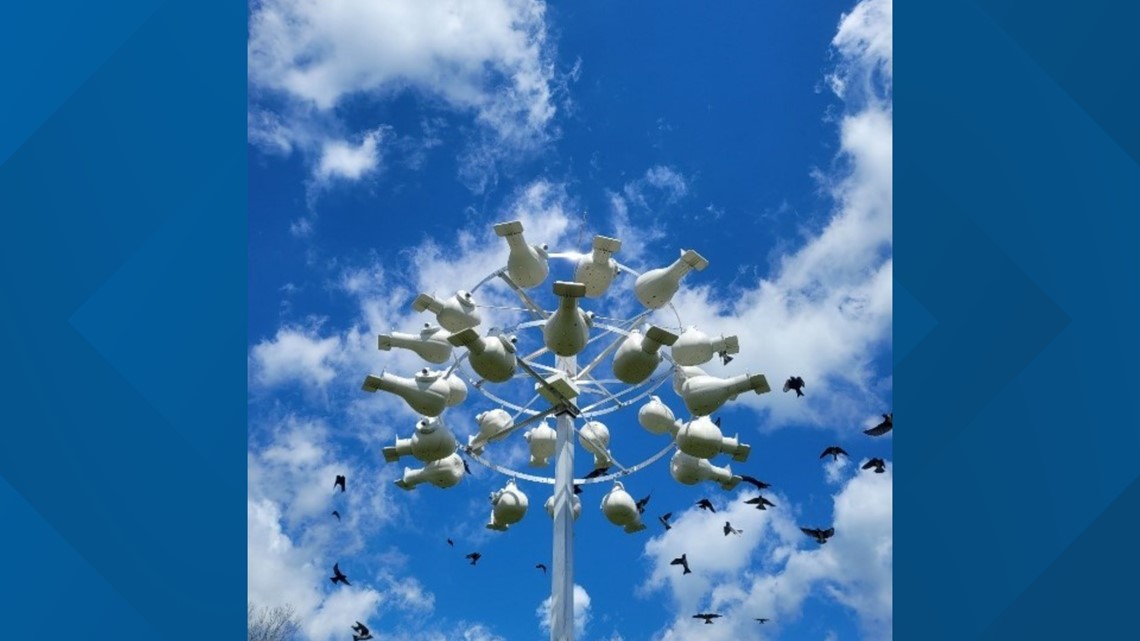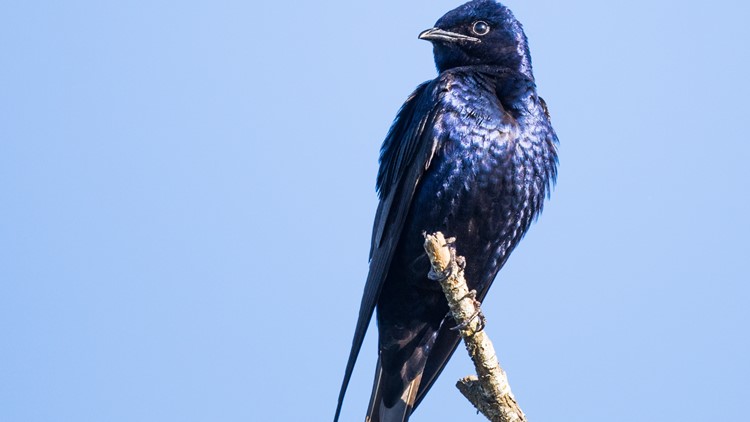GRAND ISLAND, N.Y. — The Purple Martin bird has made a return to Western New York.
The United States Environmental Protection Agency (EPA), the New York State Office of Parks, Recreation and Historic Preservation and New York State Department of Environmental Conservation (NYS DEC) announced Thursday Purple Martins are returning to Buckhorn Island State Park in Grand Island.
More than $5 million in funding from the Great Lakes Restoration Initiative has helped restore and protect the 13.5 acre marsh habitat.
“This is one of the thousands of great habitat restoration projects supported by the Great Lakes Restoration Initiative,” said EPA Region 5 Administrator and Great Lakes National Program Manager Debra Shore. “That is why funding from the Bipartisan Infrastructure Law is so meaningful. It adds an additional $1 billion to accelerate restoration and protection efforts across the Great Lakes.”
“Large numbers of purple martins annually arrive and spend one to two weeks roosting within the Niagara River Area of Concern, specifically at Grass Island, before migrating to South America,” said New York State DEC’s Niagara River Area of Concern Coordinator Mark Filipski. “This is a local phenomenon, which indicates the importance of this unique habitat along their migration path. The available habitat, and opportunity to feed, is necessary to the survival of these birds.”
“With our state and federal partners, New York State Parks is playing a leading role to help purple martins in state parks along the Niagara River,” said New York State Parks Western District Director Mark V. Mistretta “Purple martins provide great wildlife watching opportunities for park visitors and the large numbers of purple martins are a sign that our efforts to restore the Niagara River and surrounding lands are working.”
Purple Martins are common birds, but their numbers began to decline between 1966 and 2015. Four nesting structures were installed by the NYS DEC and the US Fish and Wildlife at Beaver Island State Park. Of the 96 nesting areas, 94 were confirmed to have eggs or nests last June. There are plans to install more nesting structures.







